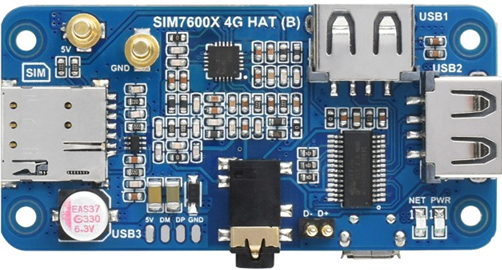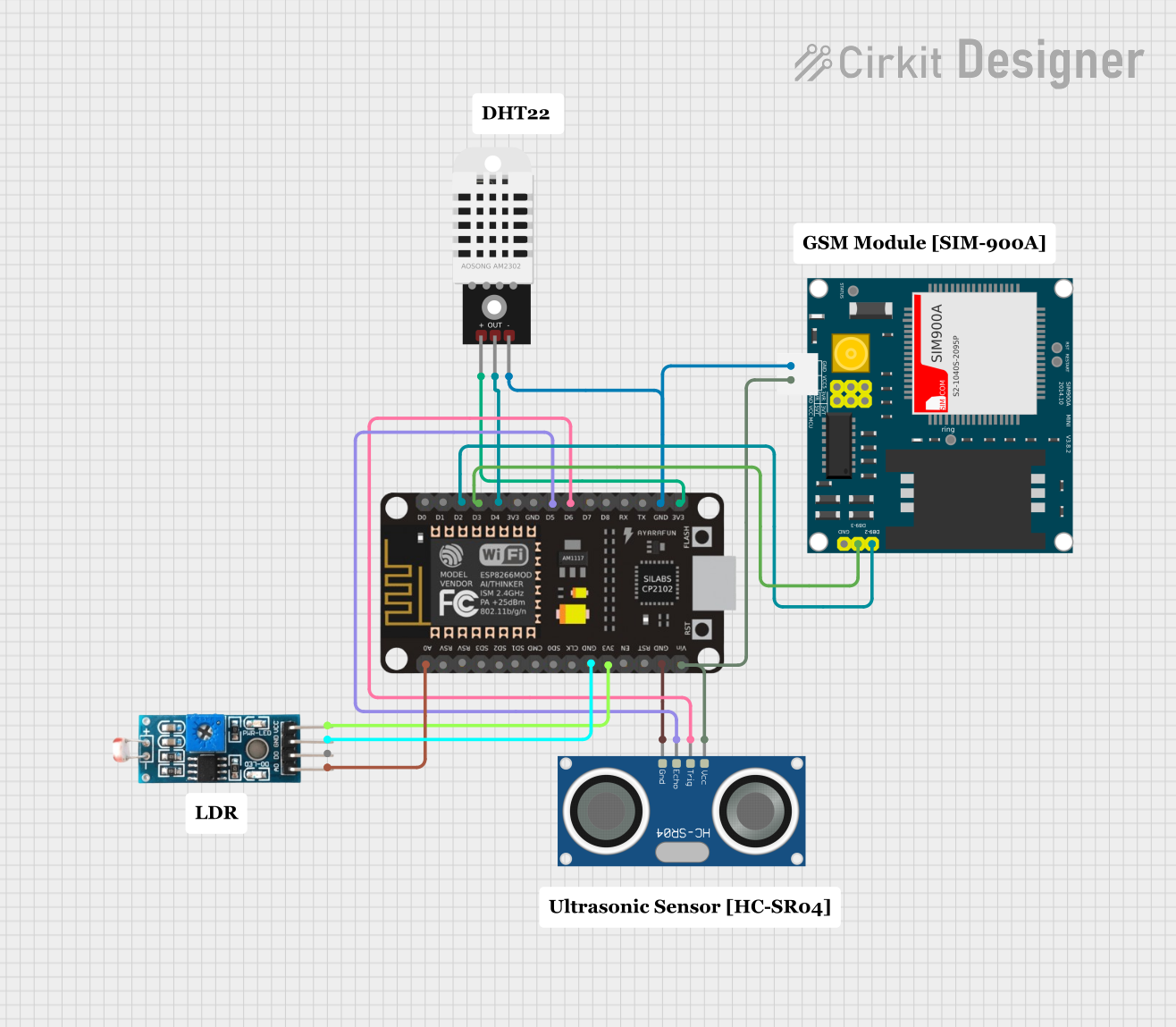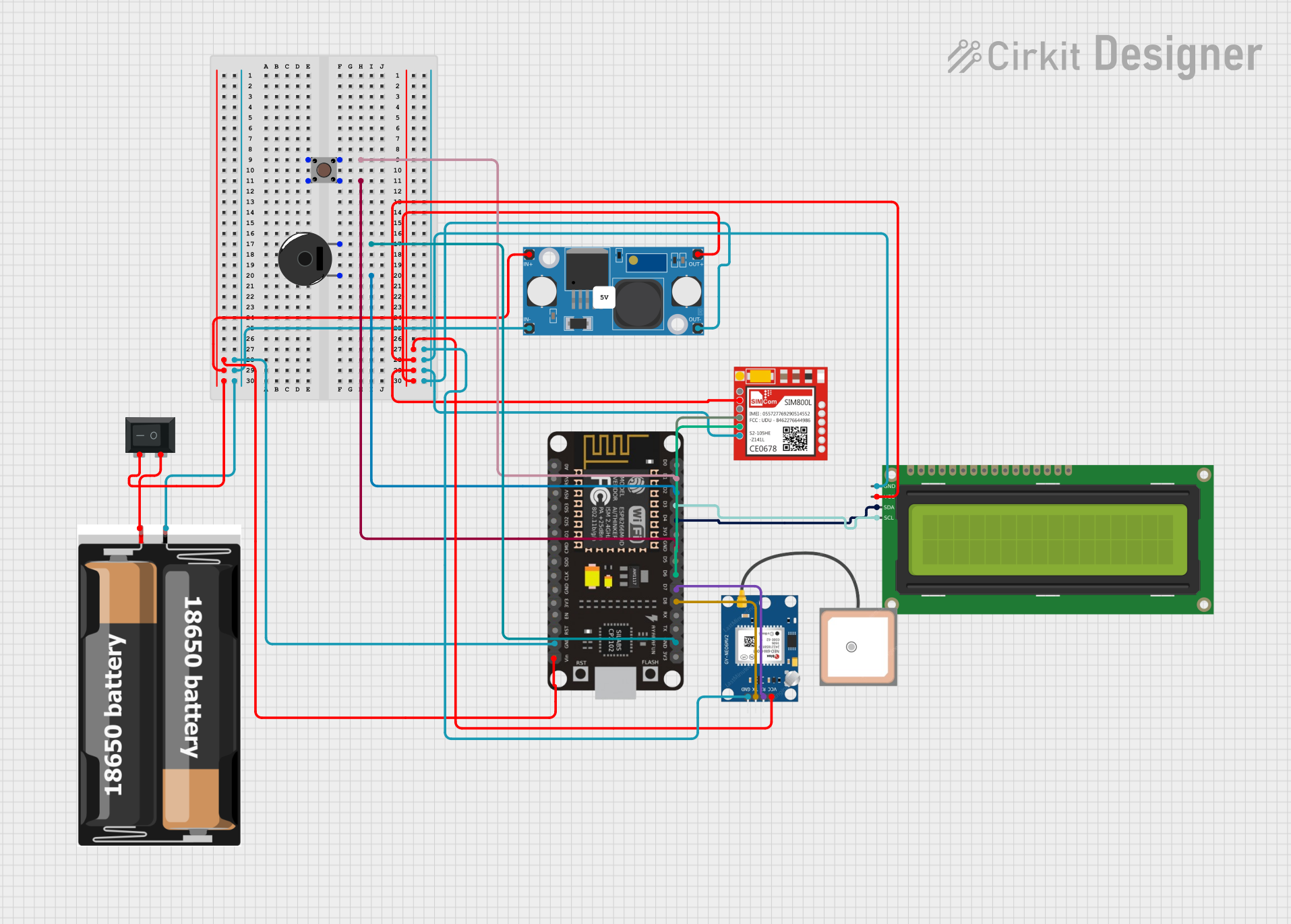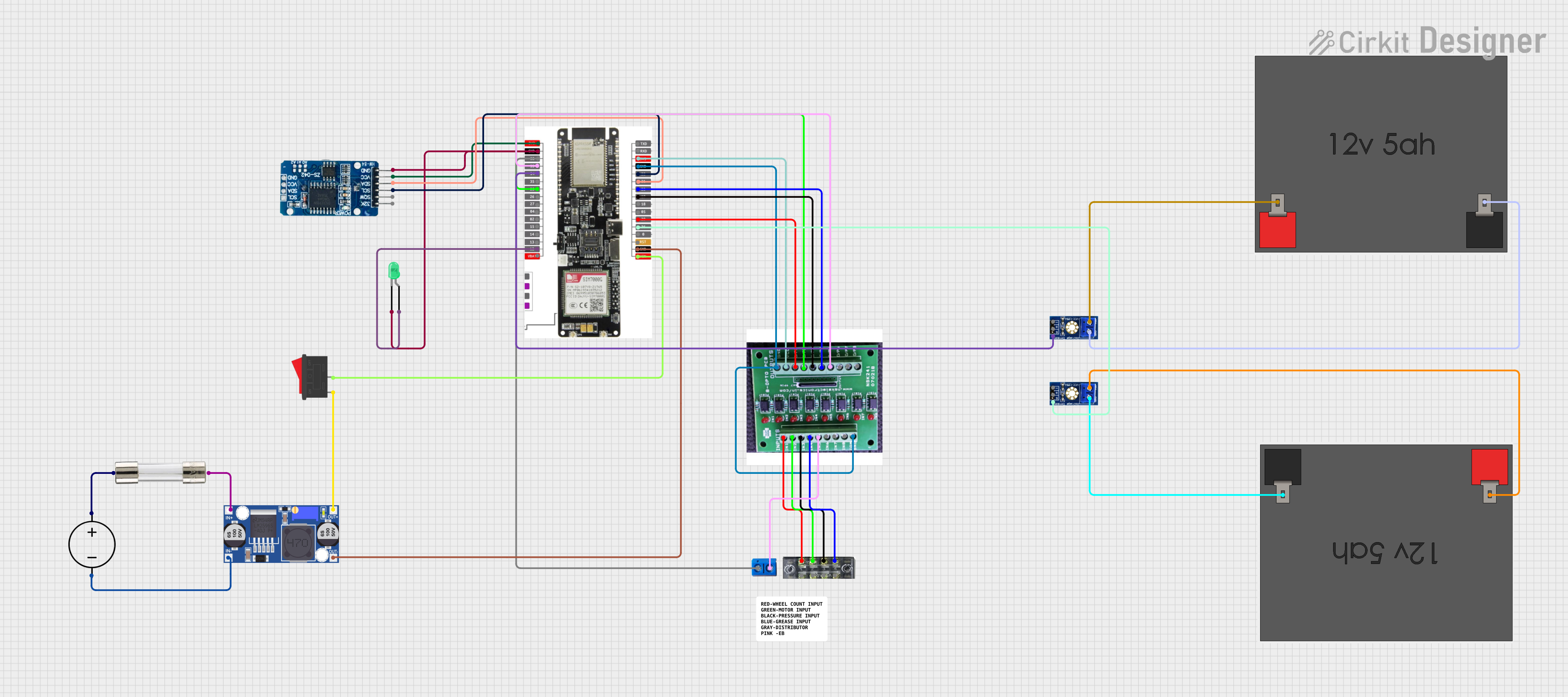
How to Use SIM7600G-H: Examples, Pinouts, and Specs

 Design with SIM7600G-H in Cirkit Designer
Design with SIM7600G-H in Cirkit DesignerIntroduction
The SIM7600G-H is a 4G LTE module that supports multiple communication protocols, including GSM, GPRS, and WCDMA. It is designed for Internet of Things (IoT) applications, offering high-speed data transmission and integrated GPS functionality. This module is ideal for applications such as remote monitoring, industrial automation, smart metering, and vehicle tracking systems. Its compact design and versatile features make it a popular choice for developers and engineers working on connected devices.
Explore Projects Built with SIM7600G-H

 Open Project in Cirkit Designer
Open Project in Cirkit Designer
 Open Project in Cirkit Designer
Open Project in Cirkit Designer
 Open Project in Cirkit Designer
Open Project in Cirkit Designer
 Open Project in Cirkit Designer
Open Project in Cirkit DesignerExplore Projects Built with SIM7600G-H

 Open Project in Cirkit Designer
Open Project in Cirkit Designer
 Open Project in Cirkit Designer
Open Project in Cirkit Designer
 Open Project in Cirkit Designer
Open Project in Cirkit Designer
 Open Project in Cirkit Designer
Open Project in Cirkit DesignerTechnical Specifications
Below are the key technical details and pin configuration of the SIM7600G-H module:
Key Technical Details
| Parameter | Specification |
|---|---|
| Communication Protocols | GSM, GPRS, EDGE, WCDMA, LTE |
| LTE Bands | LTE-FDD: B1/B2/B3/B4/B5/B7/B8/B12/B13/B18/B19/B20/B25/B26/B28/B66 |
| Data Rates | LTE Cat-4: Uplink 50 Mbps, Downlink 150 Mbps |
| GPS Support | Integrated GNSS (GPS, GLONASS, BeiDou, Galileo, QZSS) |
| Operating Voltage | 3.4V to 4.2V (Typical: 3.8V) |
| Power Consumption | Idle: ~1.5mA, Active: ~500mA (varies with usage) |
| Operating Temperature | -40°C to +85°C |
| Dimensions | 30mm x 30mm x 2.9mm |
| Interface | UART, USB 2.0, I2C, GPIO, ADC |
Pin Configuration and Descriptions
The SIM7600G-H module has multiple pins for communication and control. Below is a table summarizing the key pins:
| Pin Number | Pin Name | Description |
|---|---|---|
| 1 | VCC | Power supply input (3.4V to 4.2V) |
| 2 | GND | Ground connection |
| 3 | TXD | UART Transmit Data |
| 4 | RXD | UART Receive Data |
| 5 | USB_DP | USB Data Positive |
| 6 | USB_DM | USB Data Negative |
| 7 | NET_STATUS | Network status indicator |
| 8 | GNSS_TXD | GNSS UART Transmit Data |
| 9 | GNSS_RXD | GNSS UART Receive Data |
| 10 | PWRKEY | Power on/off control |
| 11 | RESET | Reset the module |
| 12 | ADC_IN | Analog-to-Digital Converter input |
| 13 | GPIO1 | General-purpose input/output |
| 14 | GPIO2 | General-purpose input/output |
Usage Instructions
How to Use the SIM7600G-H in a Circuit
- Power Supply: Connect the VCC pin to a stable 3.8V power source and GND to ground. Ensure the power supply can handle peak currents of up to 2A.
- UART Communication: Connect the TXD and RXD pins to a microcontroller or USB-to-UART converter for serial communication.
- Power On: Use the PWRKEY pin to turn on the module. Pull the PWRKEY pin low for at least 1 second and then release it.
- Antenna Connection: Attach a suitable LTE antenna to the module's antenna connector for reliable communication.
- GPS Functionality: Connect the GNSS_TXD and GNSS_RXD pins to a microcontroller for GPS data. Attach a GPS antenna to the GNSS antenna port.
- USB Interface: For high-speed data transfer, connect the USB_DP and USB_DM pins to a USB host.
Important Considerations and Best Practices
- Use decoupling capacitors near the VCC pin to stabilize the power supply.
- Ensure proper grounding to minimize noise and interference.
- Use an appropriate level shifter if interfacing with a 5V microcontroller, as the SIM7600G-H operates at 3.3V logic levels.
- Place the antennas away from high-frequency components to avoid signal degradation.
- For GPS applications, ensure the GPS antenna has a clear view of the sky for optimal performance.
Example: Connecting to an Arduino UNO
Below is an example of how to interface the SIM7600G-H with an Arduino UNO for basic communication:
Circuit Connections
- Connect the SIM7600G-H TXD pin to Arduino UNO RX (Pin 0).
- Connect the SIM7600G-H RXD pin to Arduino UNO TX (Pin 1).
- Connect the VCC and GND pins of the SIM7600G-H to a 3.8V power supply and ground, respectively.
- Use a 2A power supply to ensure stable operation.
Arduino Code
#include <SoftwareSerial.h>
// Define RX and TX pins for SoftwareSerial
SoftwareSerial sim7600(10, 11); // RX = Pin 10, TX = Pin 11
void setup() {
Serial.begin(9600); // Initialize hardware serial for debugging
sim7600.begin(9600); // Initialize SIM7600G-H communication
Serial.println("Initializing SIM7600G-H...");
delay(1000);
// Send AT command to check module status
sim7600.println("AT");
}
void loop() {
// Check for data from SIM7600G-H
if (sim7600.available()) {
String response = sim7600.readString();
Serial.println("SIM7600G-H Response: " + response);
}
// Check for user input from Serial Monitor
if (Serial.available()) {
String command = Serial.readString();
sim7600.println(command); // Send command to SIM7600G-H
}
}
Troubleshooting and FAQs
Common Issues and Solutions
Module Not Powering On
- Ensure the power supply provides a stable 3.8V and can handle peak currents of 2A.
- Check the PWRKEY pin connection and ensure it is pulled low for at least 1 second during startup.
No Response to AT Commands
- Verify the UART connections (TXD and RXD) between the module and the microcontroller.
- Ensure the baud rate matches the module's default setting (typically 9600 bps).
- Check if the module is properly powered on.
Poor Network Signal
- Ensure the LTE antenna is securely connected and positioned correctly.
- Check the network coverage in your area and ensure the SIM card is active.
GPS Not Working
- Verify the GPS antenna connection and ensure it has a clear view of the sky.
- Wait for a few minutes for the module to acquire satellite signals.
FAQs
Q: Can the SIM7600G-H work with a 5V microcontroller?
A: Yes, but you need a level shifter to convert the 5V logic levels to 3.3V, as the SIM7600G-H operates at 3.3V logic.
Q: What is the default baud rate of the SIM7600G-H?
A: The default baud rate is typically 9600 bps, but it can be configured using AT commands.
Q: How do I reset the module?
A: Pull the RESET pin low for at least 100ms and then release it to reset the module.
Q: Can I use the SIM7600G-H for voice calls?
A: Yes, the module supports voice calls using AT commands, provided your SIM card and network support it.